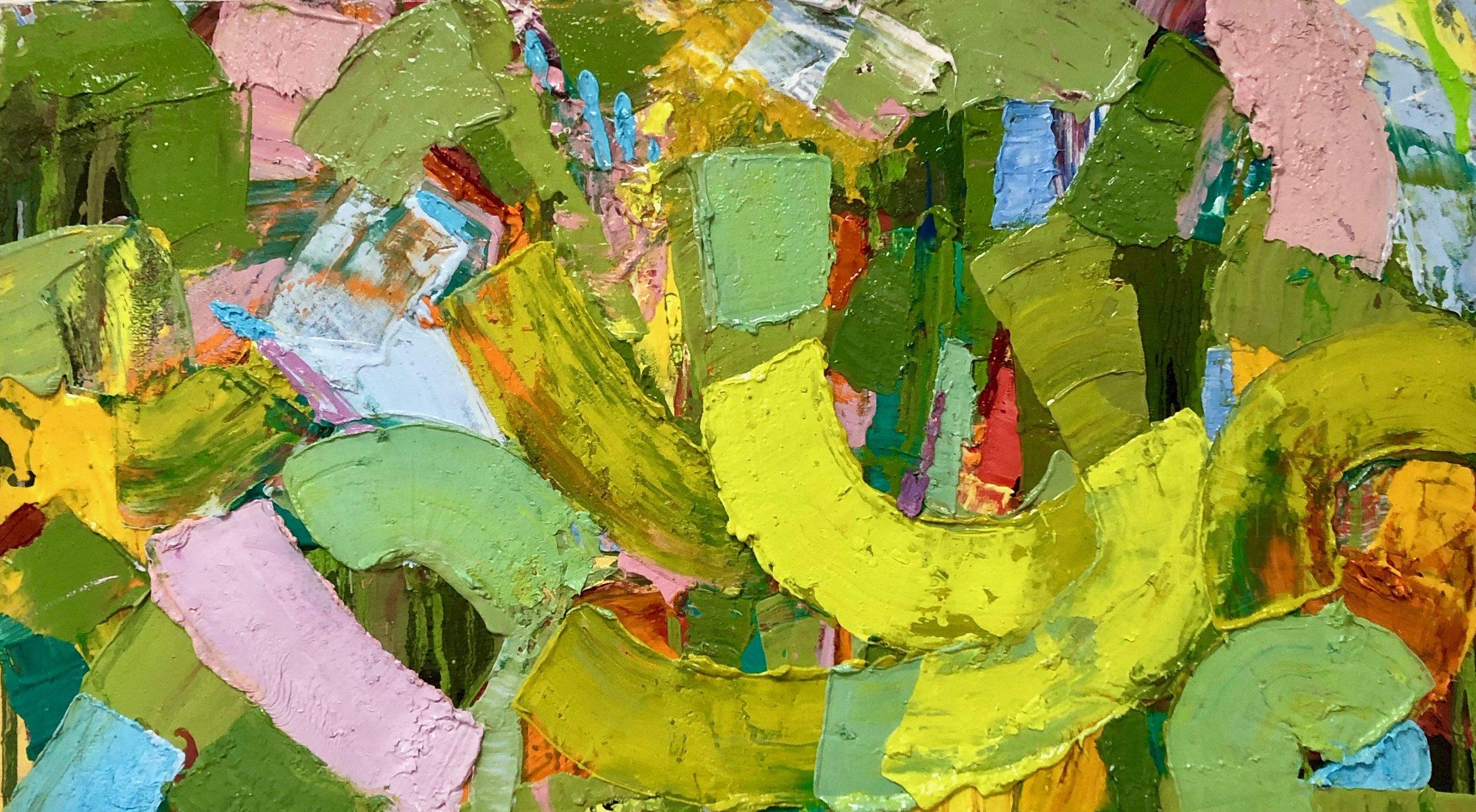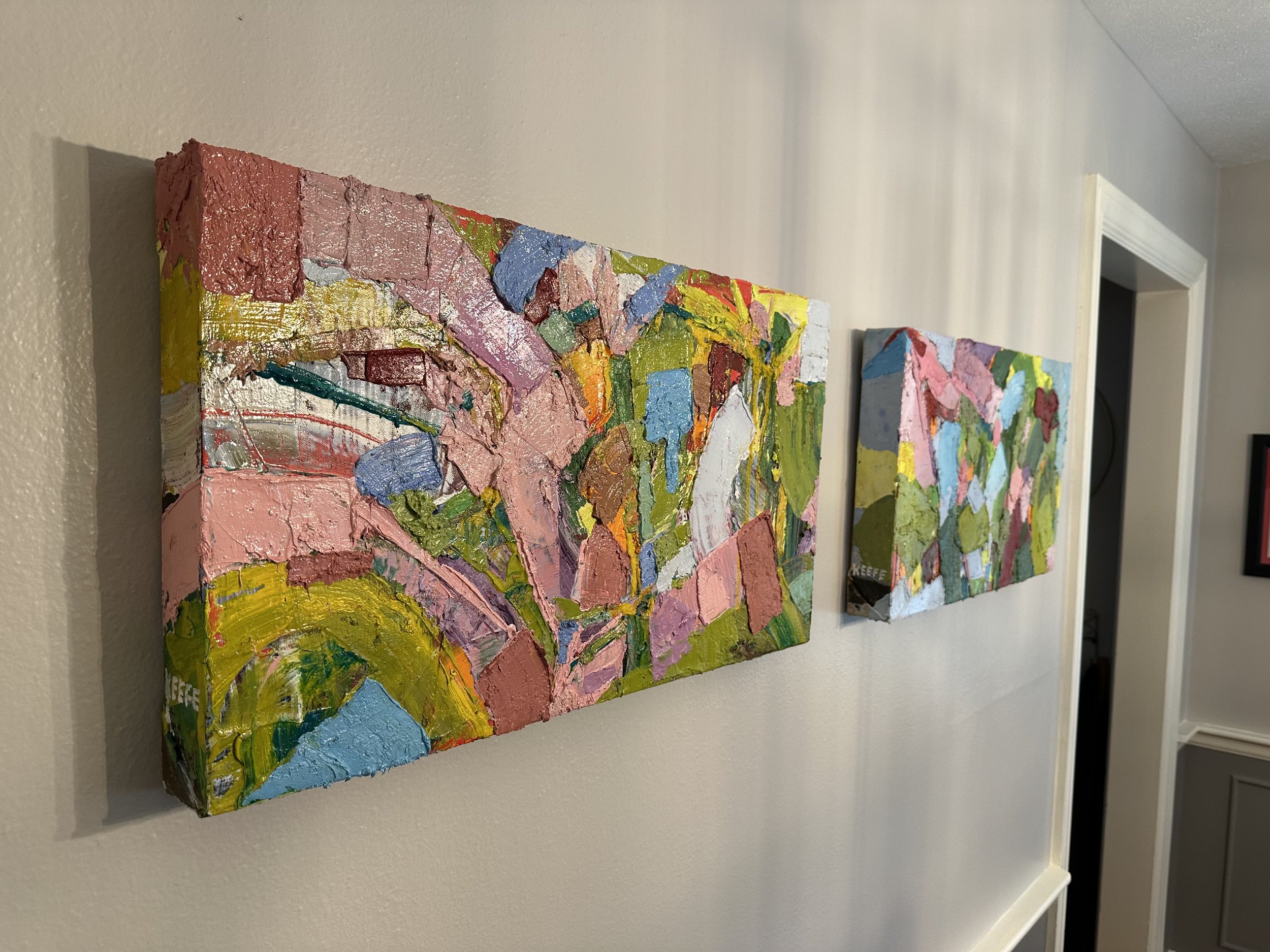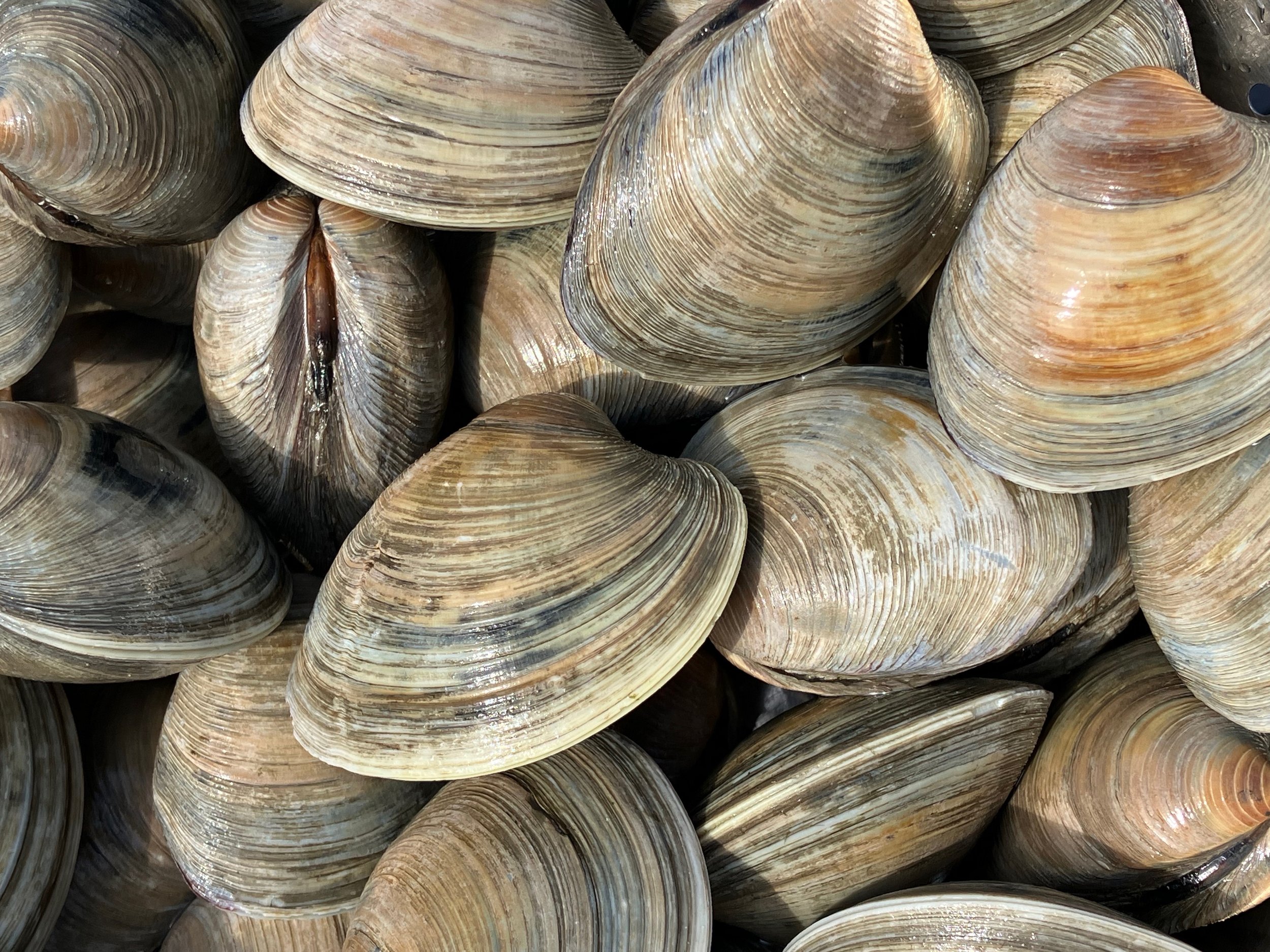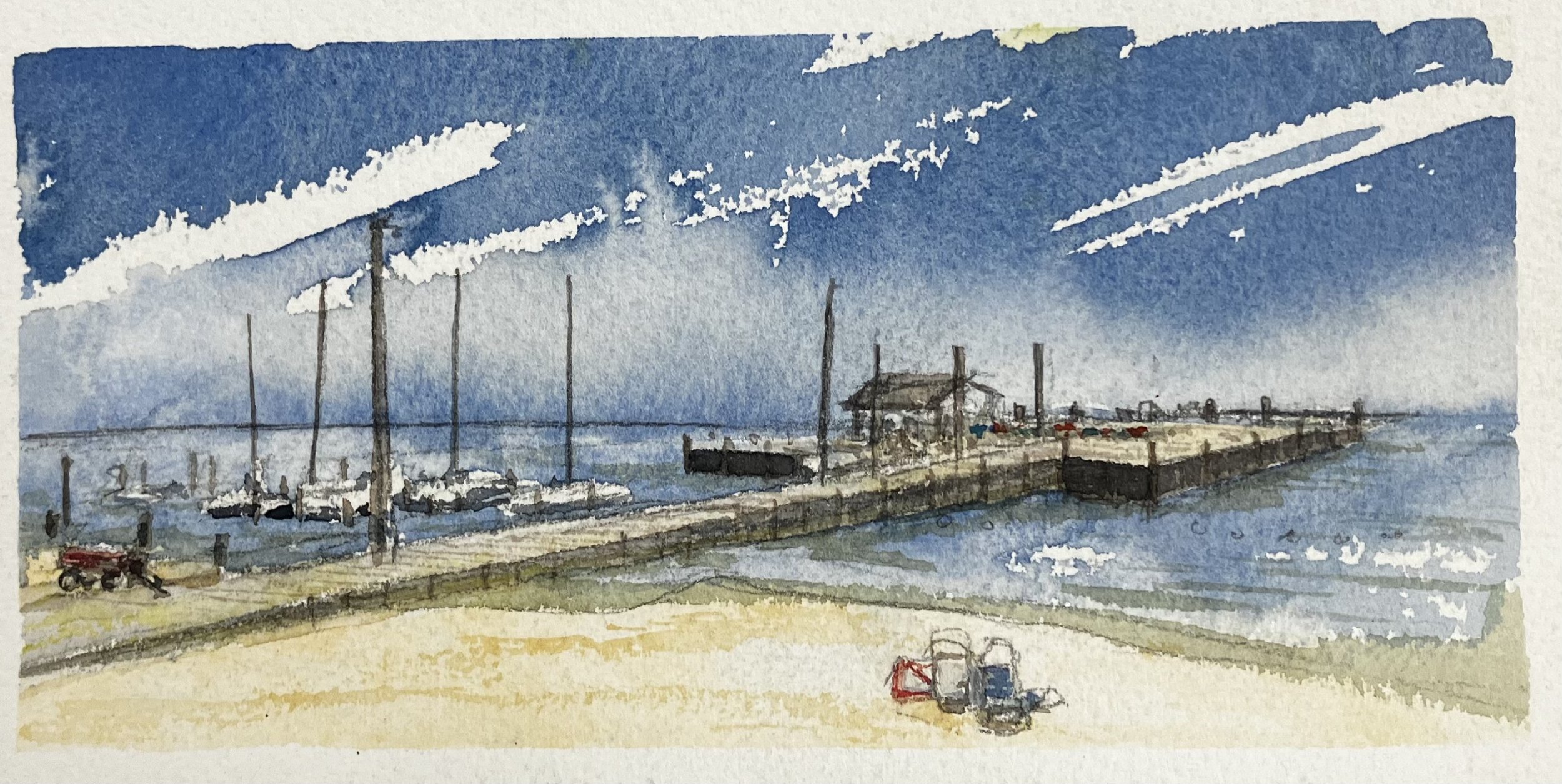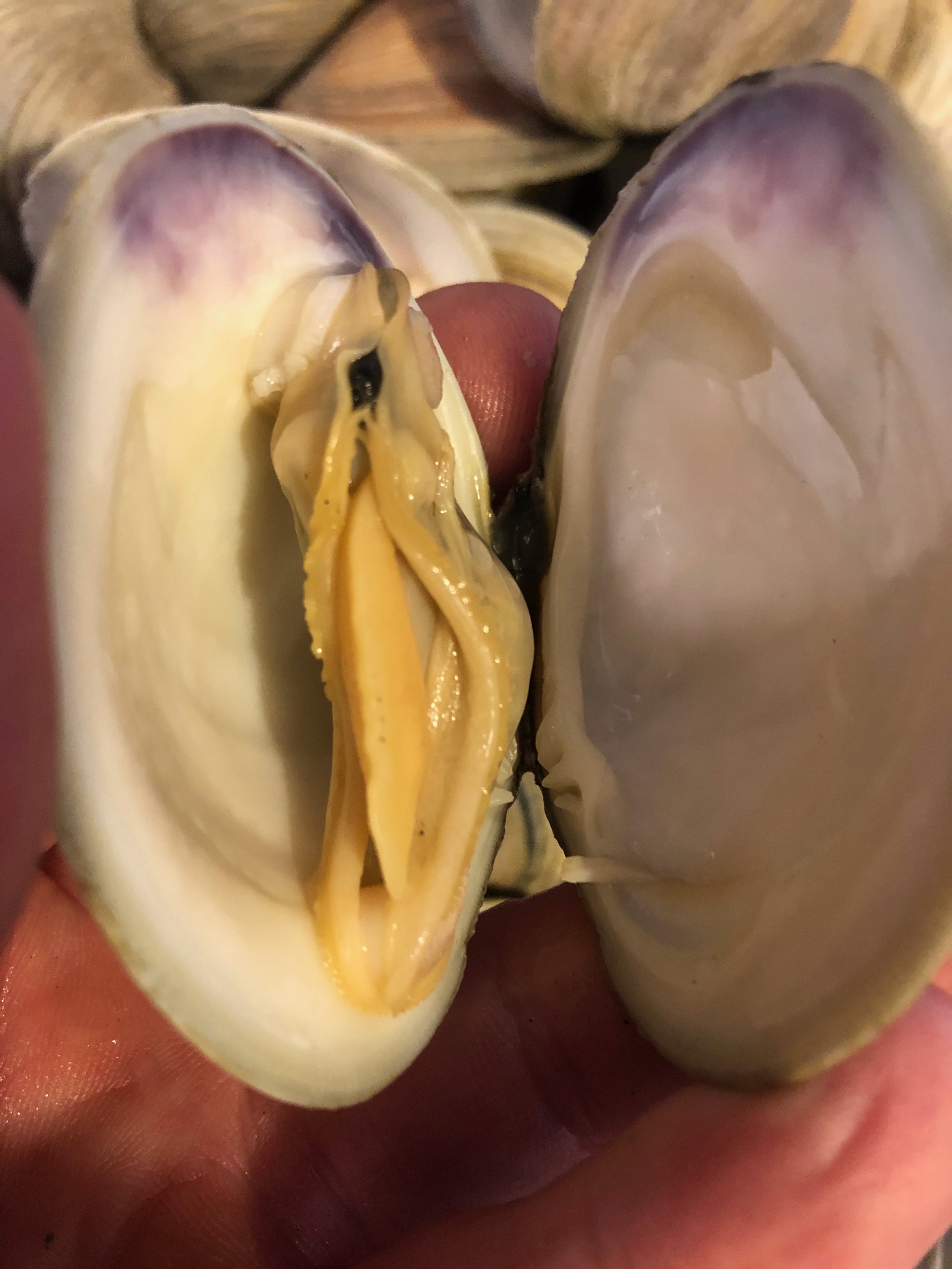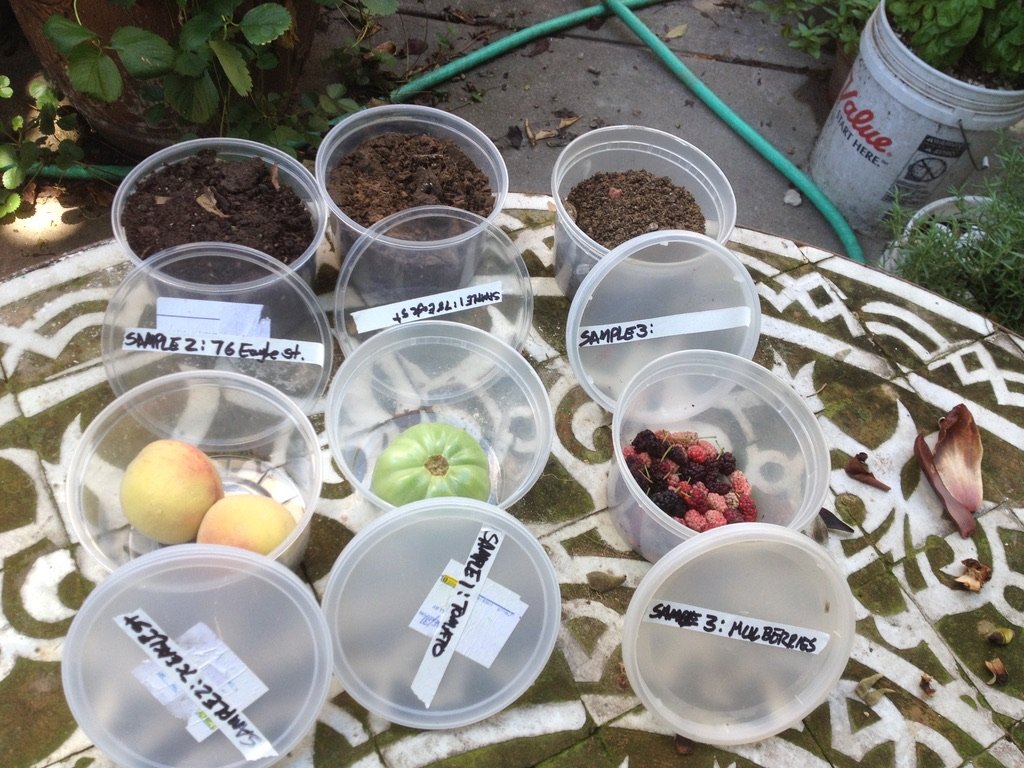Overlooking my garden from the porch balcony I can see the steps down are in dire need of repair. The rotten wooden treads slip underfoot in the morning dew.
At the foot of the steps lies a brick-paved courtyard. It’s encircled by a low garden wall of reclaimed cobblestone, brick, and concrete which retains the roots of fruit and flower trees, herbs, and bulbs. In the morning it’s ripe with petrichor. A tangle of poison ivy and morning glories begins to choke the rose bush. I look back at the open screen door. I have an everything bagel from Knickerbocker in the toaster.
The courtyard bricks are cold under my feet, just as the wooden porch was cold too, but it doesn't drain the heat from my feet like the brick does. I should be wearing shoes and not just socks. The townhouses keep the yard shaded and cool until lunchtime when the sun arcs over the rooftops. Spring bulbs are in bloom; tulips, narcissus, and iris; in abundance. The roses are blooming. Perfect pink long-stemmed buds on red-tipped new growth branches. This rose bush is the tallest thing in the yard at fifteen feet of wild thorny glory in every direction. It is the only large plant I left when I removed the overgrown and broken trees that inhabited this space before. I think a rose can live up to 100 years? This is one of the largest and oldest roses I have ever seen.
I set my coffee mug down on the iron bench under the rose bush. The strawberries are flowering. There are dandelions and purslane in the cracks of the brickwork. Morning glories are sprouting everywhere. I begin to slowly unwind the tendrils of the morning glories entangling the rose bush. I have to be gentle or I will cut myself on the thorns of the rose; like knives. Even worse, I could damage the rose leaves and tender shoots if I pull too much. It takes a few minutes to do the work of disentanglement.
I love these plants. Many of them I have been tending for over a decade, even though I have only been at this house for just under two years. I relocated much of my garden from the last one with cuttings and roots and potted plants. The last truckload that left my last home was all potted plants. I was so tired that day. Having lifted so much already, the last of these were so heavy I had no tools for leverage. There wasn't a lift gate or a ramp for the truck, and I had to slowly walk and lift each of the largest pots into the truck. My irises, lilac, and moss. The soil and the planters were so heavy. I couldn't take them all. I ran out of time and energy.
A mockingbird is at the highest point on the block. It calls loudly. It wants me to know that it is the yard boss; all of the backyards together. About half of these yards are unused, not gardens. So many people live here. I wish they would take care of their yards. I can see their problems beginning to encroach into my space. In the corners are poison ivy, Virginia creepers, morning glories, Tree of Heaven, and other invasive problematic species. I pull them back as much as I am able. I wish that I could access the next yard over. Maybe after I fully train and tame my own yard, I'll look into expanding into the neighbors' neglected area.
The potted plants in my yard were cultivated from cuttings from a neighbor's yard years ago;. The moss collected from sidewalk cracks; The iris rescued from under a small hedge on a lot to be demolished…. These were some of my favorite plants. Now here, in this garden, they have been replanted and are growing and blooming vigorously. They are so happy here, as am I.
I should get upstairs to the studio. I have a bunch of cadmium chartreuse squirted out on my marble palette. It’ already blended with linseed oil and cold paste wax. It's been there for days and should be close to the right consistency for the next color layer.
An airplane whines through the sky on its approach to Laguardia. I forgot about my bagel.
Two of the series. Sold at The Other Art Fair Spring 2022. At collectors home.
